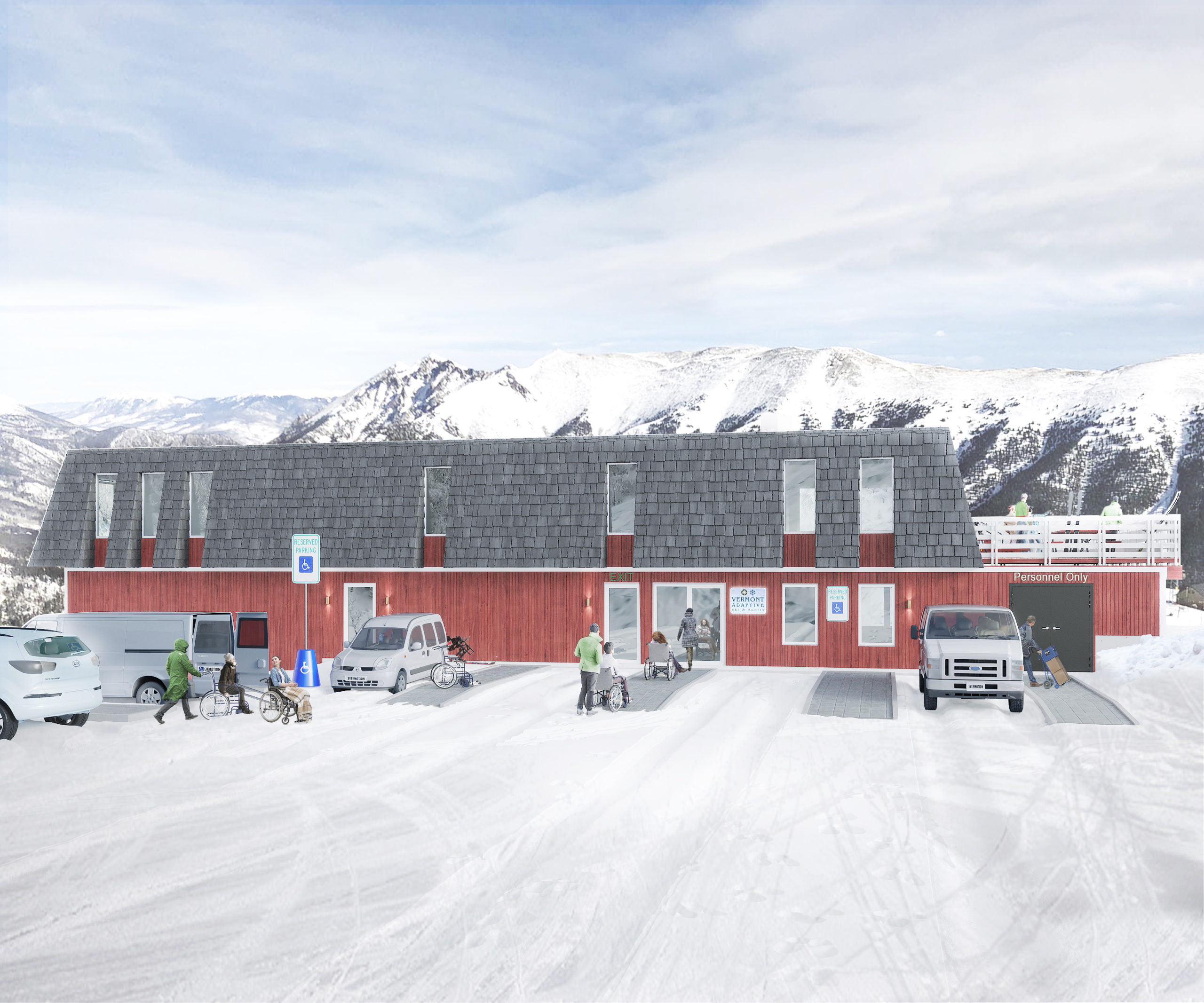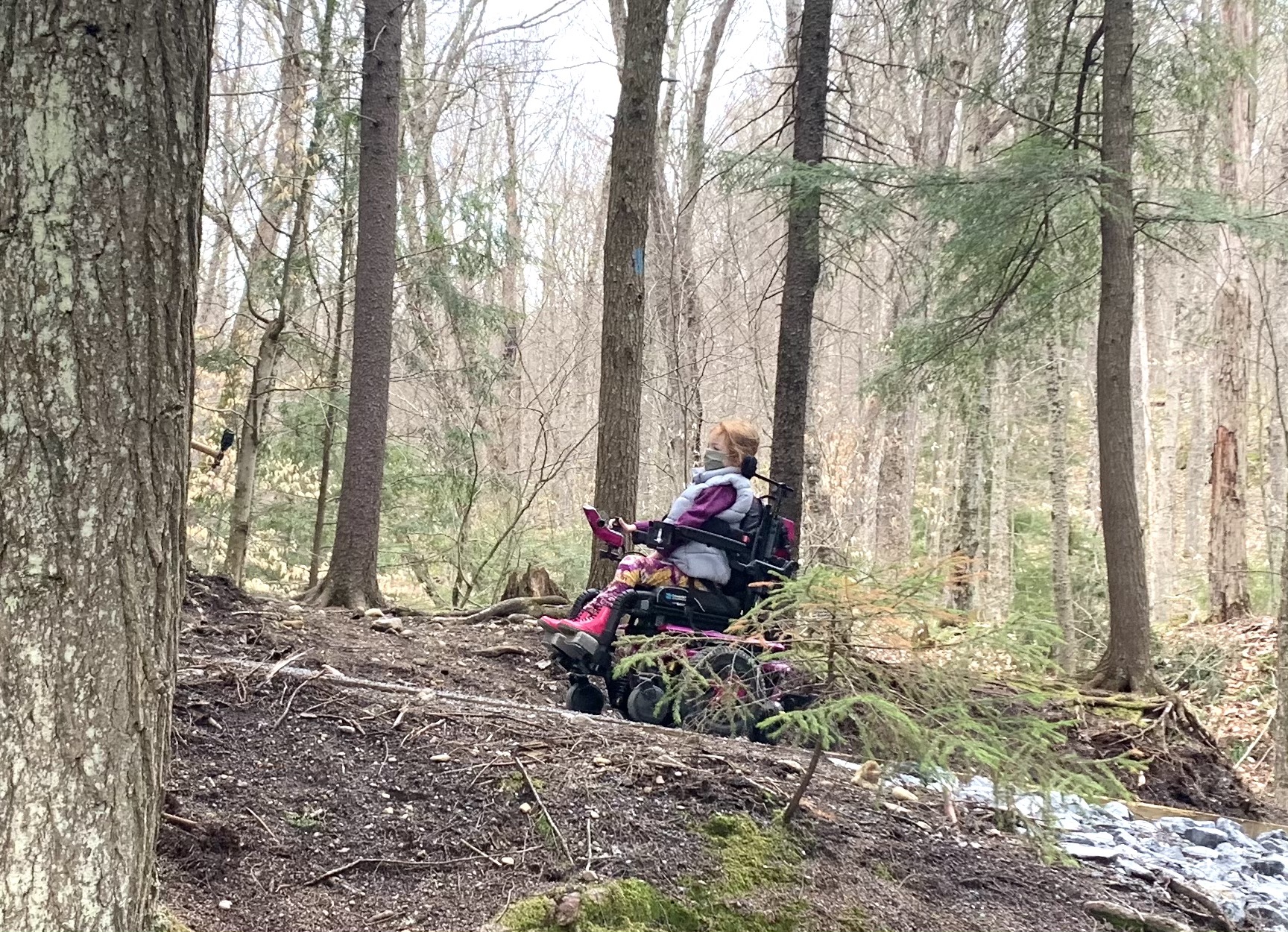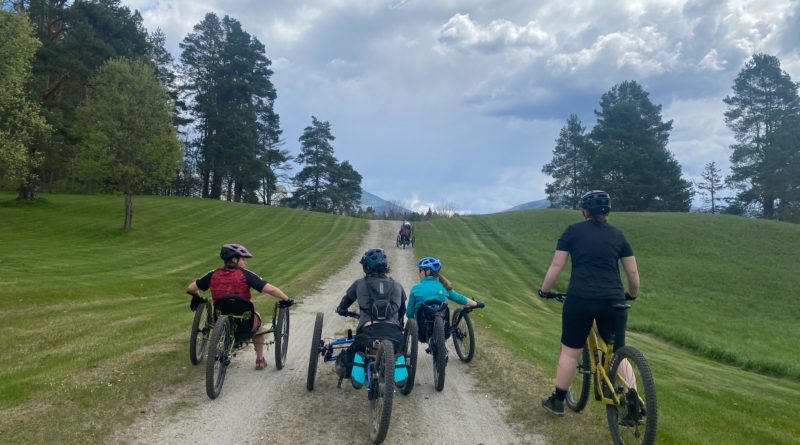New All-Access Trails
On May 3, Emma Austin, 10, piloted her electric wheelchair over the boardwalk, bridges and turns of the 1.2-mile Robert Frost trail as it wound alongside a river in Ripton.
Eleven days later, Kelly Brush and Greg Durso powered their fat tires rides over sections of Kingdom Trails.
And on May 20, Mike Murphy watched as shovels dug into the earth at Sugarbush’s Mt. Ellen base lodge breaking ground for a long-awaited project: a new $2.5 million, 4,000-square-foot adaptive sports facility.
All of them were celebrating new adaptive trails, programs and facilities that will change how they and others with disabilities recreate in Vermont.
Murphy watched as Erin Fernandez, Exec. Director of Vermont Adaptive, took the podium to talk about the enormous impact the facility will have. “We literally started at Sugarbush in a closet at the Gatehouse Lodge nearly three decades ago, and then we moved to a picnic table in the open area at Mount Ellen, and then into our 400-square-foot corner at the base lodge where we’ve been for the past 20 years… The new facility is going to make everything so much … awesomer!” Fernandez said with enthusiasm.

For Murphy, whose father Jack Murphy helped found Sugarbush more than six decades ago, the message had a particular resonance. Mike grew up skiing at Sugarbush and became, as he modestly said, a good skier.
But in 1977 he was in a serious motorcycle accident. “When I recovered consciousness, I looked down and saw I had one good leg and the first thing I thought to myself was, ‘Well, that’s good, I’ll still be able to ski,’” he said.
At that time, there were not many programs for people with disabilities, though Murphy had seen adaptive ski programs out West and knew what was possible. He taught himself to ski on one leg and ended up making the U.S. National Team for adaptive skiers. In the 1982 World Championships in Switzerland, he won the silver in slalom.
Murphy, who was in Colorado at the time, came back to Vermont and discovered Vermont Adaptive, the program that started at Ascutney. Later, he helped connect Sugarbush to the program. It’s a program that Sugarbush’s former owner Win Smith embraced and has helped foster for the past 20 years and which new general manager, John Hammond, has encouraged Alterra Mountain Company, to support.
“Having an accessible building is key to accessible skiing,” says Murphy about the new facility which will encompass three levels as part of an addition to the existing Mount Ellen base lodge.

It is the second such building for Vermont Adaptive, whose headquarters is in Pico. A third building, geared for summer water sports, is slated for the Burlington waterfront with easy access to the bike path. The organization hopes to raise $4 million to construct both buildings and ensure an endowment for their operations.
Vermont is also making headway in terms of adapting existing trails to accommodate a wide variety of a-MTBs (accessible mountain bikes.) “Over the past few months, trails manager C.J. Scott has been working with the great folks at Vermont Adaptive and the Kelly Brush Foundation to help identify ways to make the trails more inclusive,” said Kingdom Trails’ Lilias Ide.
According to Greg Durso an avid mountain biker and program manager at the Kelly Brush Foundation, the main challenges for wider adaptive bikes are off-camber trails and narrow bridges.
The bikes on hand for the demo ranged from a Fat Stinger, a three-wheeled, fat-tire recumbent you pedal with your feet, to the hand-pedaled Fat Nuke E-Assist (electric-assisted) to the prone-position, 3-wheeled Hammerhead. The bikes cost $10,000 to $16,000 and up. According to Durso, the Kelly Brush Foundation was able to make grants for 12 e-MTBs this past year to participants around the country.
Both Durso and Brush suffered spinal cord injuries and are avid riders. “The good thing about these bikes is they are also great ways for people to get out of their chairs and get closer to nature,” says Durso. Eventually, Kingdom Trails is hoping to add a legend to their trail map designating which trails are aMTB-friendly – what Ide thinks may be the first such effort in the country. Durso hopes other trail networks he’s working with will follow suit.
Though the efforts at Kingdom Trails, Sugarbush and the Robert Frost trail are separate and funded outside of state government and they come with a hefty price tag.
Brian Austin, an engineer with the U.S. Forest Service, helped design and build the half-mile section of raised boardwalk on the Robert Frost Trail that his daughter Emma wheeled down in her electric chair at the dedication on May 3. It took three years and $650,000-plus to build the 1.2 mile trail. Pilons had to be sunk 21 feet down in the deepest parts of the wetlands to support the boardwalk, turns gauged so that wheelchair pilots could easily navigate them.
Sen. Leahy helped secure the federal funds for the project, which sits on the eastern edge of the Moosamaloo National Recreation Area.
Monica White, interim commissioner of Vermont’s Department of Disabilities, Aging and Independent Living, was at the May 3 dedication to herald the renovation of a trail that brings opportunities to a special segment of the population. “An estimated one in five Vermonters is living with at least one type of disability,” she said, “and one in 10 of us has two or more disabilities.”
White also noted that many of these trails also help older people get outdoors. “Vermont’s population is aging: It is estimated that over a quarter of our population (28 percent) will be o
ver the age of 65 by the year 2030. Accessible exercise options are a key to health aging.”
Additional reporting by Lisa Lynn.

